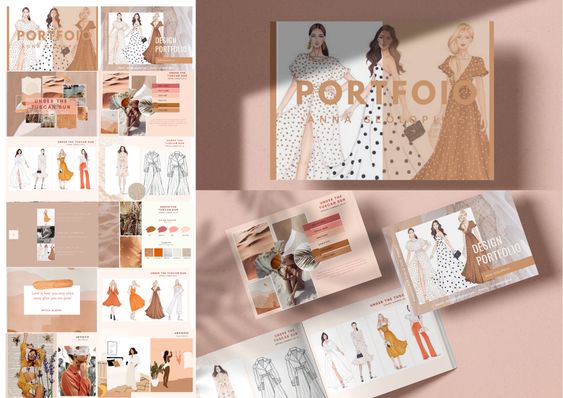
Fashion stylist portfolios are significant for fashion school graduates look out for the medium to showcase their interests and skills. While a degree from a fashion school do showing your technical ability and understand of basic principles of human communication, create a fashion stylist portfolio allows you displaying your skills to potential employers.
You do follow these key steps to create a fashion stylist portfolio:
Select the work you need to include
Before you build up your fashion stylist portfolio, you do select the working that you think best exemplifies your technical and creativity skills. If you have images of your working that were publishing in magazines, you do involve them showing your previous professional accomplishments. If you don’t yet have publishing work, you do find other manners to suggest that audiences appreciate your skills, like favorable reviews on social media and online forums.
Since the portfolio’s purpose is to showcase both your potential and current ability, you do also include research samples in the format of sketchbooks and notebooks to showing the viewer how you construct on your ideas and what your approach is to problem-solving. Also, if you have enough material, you do edit your portfolio to fittest the style of the human or institution you plan on sending it to.
Label your work
After select the pieces of work you keen wish to involve in your portfolio, you do begin labeling each of them by briefly explaining what you’re trying to showcasing and the mediums you’re utilizing. When doing that, it’s usually significant to visualize your work from another outlook and offer relevant explanations to someone who might not be familiar with what you’re keen trying to show. Given that they probably have limited info about you, this do offer showcase and context your work style.
Decide on a format
Once you have a basic idea of what to involve and how to label it, you do begin working on the actual portfolio. The A3 and A2 paper sizes are normally appropriate, as they’re huge enough to displayed complex creations in detail. Classic A4 paper size is also nice if you feel it do fully express your ideas. It’s significant to remember that your aim is showing the viewer the creative procedure you went through when make up your work.
Make a digital copy of your portfolio to share online
You do also develop a digital portfolio that you do sharing online with potential clients and employers. To do that, foremost utilize a searching engine to discover a domain checking website, which is a website that check up a domain names to let you understand if they’re accessible and where you can purchase them from, After selecting a representative domain name, you do purchase it and explore a website-building site to develop your portfolio. You might not require extensive website-building experience and knowledge, as most such sites having intuitive website-builders.
1. Sign up. Joining Format and enjoying a 14-day free trial—no credit card needed for new applicants.
2. Pick a template. Select a template that complements your brand and your work. Don’t fret if you can’t decide on a template just yet, you do always customize or change it later.
3. Upload your best working. Narrowing up the portfolio to at least 10 to 15 examples of the design working. Use photos, sketches of finish styling and garments.
4. Editing your portfolio website. Add galleries and pages, edit site navigation, and develop your About page where you discuss your professional and academic background, as well as your brand.
5. Personalize your website. What is your brand like? Are you all about airy and light clothes? Or are you experimental and flashy? Edit your website’s background, fonts and colors reflecting your art.
6. Take it further. With Format, you get tons of cooling add-ons to support turning your website into a one-stop-shop! Added a blog, boosting your online presence with the SEO Editor, or getting an online store up and running.
7. Included your published works, if in college, put your good projects.
8. Mentioning your testimonials if they’re accessible online
9. Have a digital portfolio along with the physical one.
10. Showcasing a variety of projects that are flexible enough to be an perfect candidate for numerous departments.
11. Keep it as the professional as possible.
12. Including your work images that are published in magazines. It’s significant to publish the work in context
13. In case you don’t have published proofing of your work, including other evidence of your works. Mentioning favourable reviews of your work in online forums to develop a better impression.
14. Have a digital portfolio of your working along with the printed one.
15. Do showcasing the kind of work you need to do professionally.
